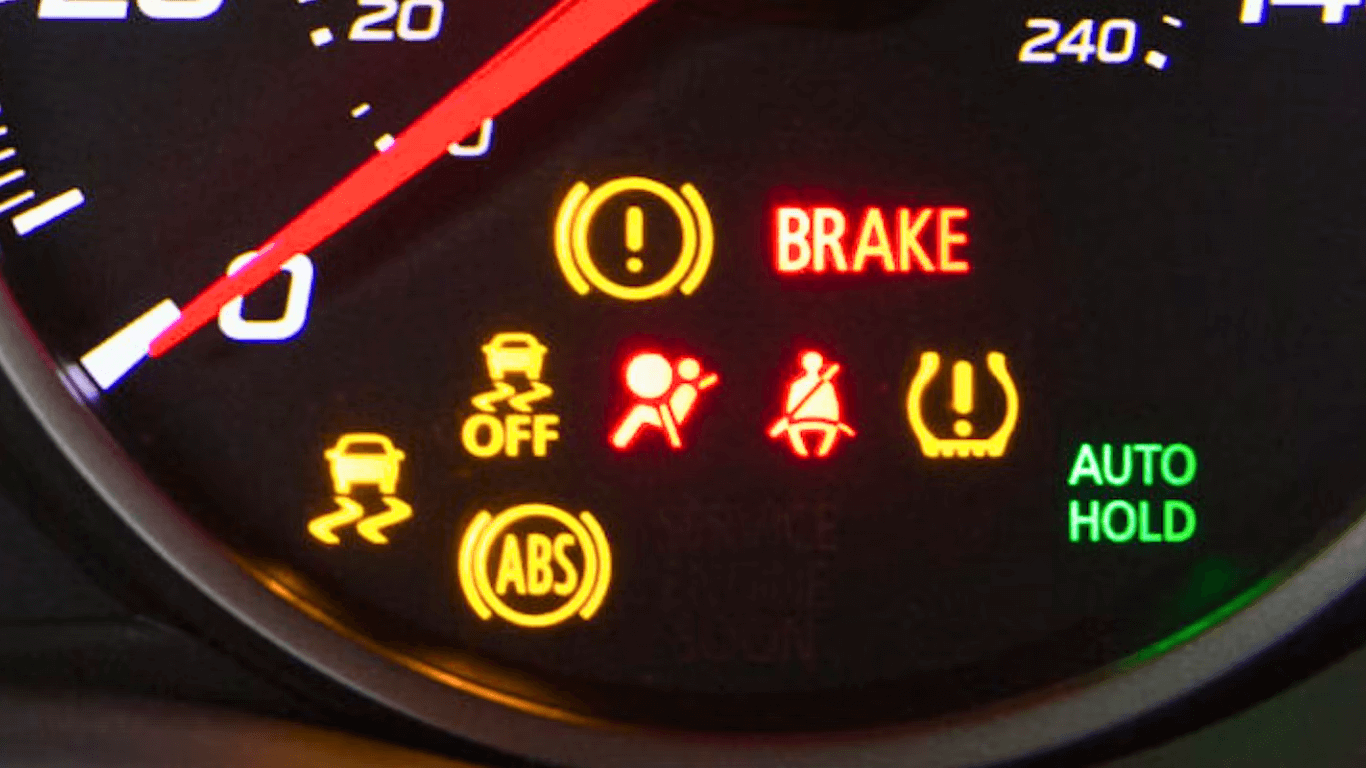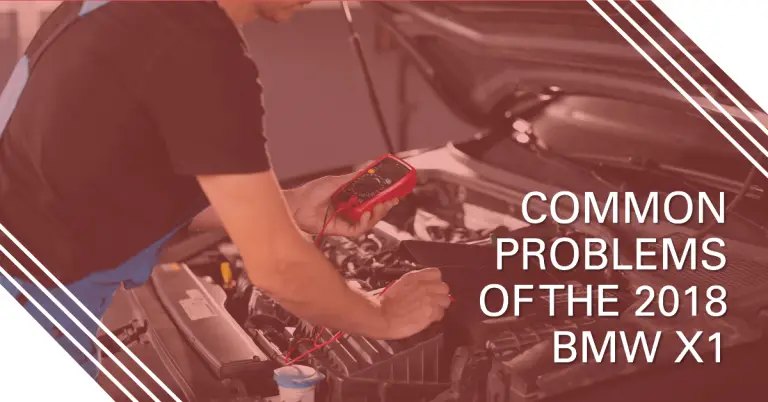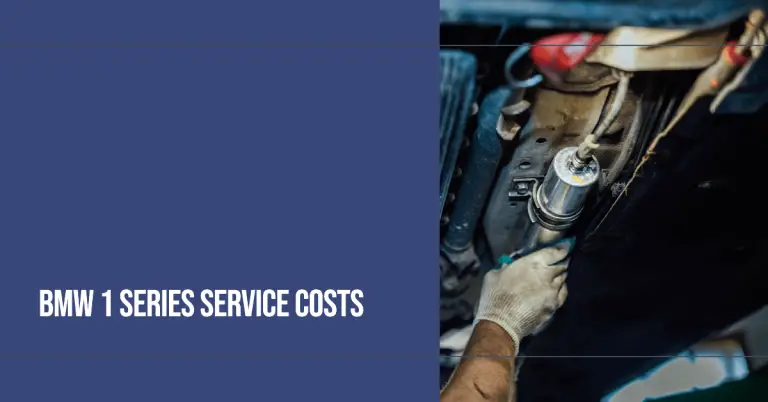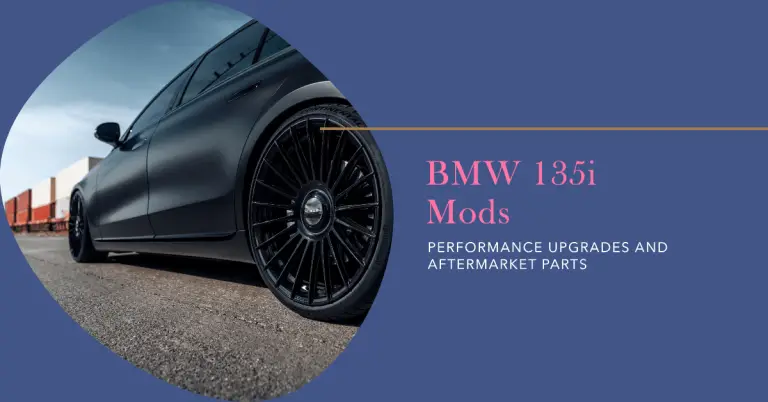BMW 1 Series Emissions Warning Light: What It Means & How to Fix It
You’re driving along in your BMW 1 Series when suddenly an ominous yellow or amber colored warning light illuminates on your instrument cluster that looks like the outline of an engine. What does the BMW 1 Series emissions warning light mean and what should you do? The emissions light indicates a problem with your vehicle’s emissions control system. While this can sound concerning, oftentimes it is a simple issue like a loose gas cap or faulty oxygen sensor. With some basic troubleshooting and repairs, you can likely get the light turned off and pass emissions testing again.
This article will cover common causes and solutions when the BMW 1 Series emissions warning light comes on. You’ll learn how the emissions system works, top reasons the warning light turns on, how to diagnose codes yourself, and the steps needed to fix the underlying issue. Read on to get a better understanding of what to do when you see the emissions light come on in your BMW 1 Series!
What Does the Emissions Warning Light Mean in a BMW 1 Series?
The primary function of the emissions control system in your BMW 1 Series is to reduce tailpipe emissions to meet emissions regulations. Sensors monitor emissions coming from the exhaust like hydrocarbons (HC), carbon monoxide (CO), and oxides of nitrogen (NOx).
The Engine Control Unit (ECU) receives data from sensors in the emissions system. When emissions rise above a preset limit, the ECU illuminates the emissions warning light on the dashboard. This indicates one of the components is not operating properly. The system needs diagnosis and repair to lower emissions again.
Some common emission related sensors and components in a BMW 1 Series include:
- Oxygen Sensors – Measures oxygen content in the exhaust to gauge combustion efficiency. Signals ECU for proper fuel adjustment.
- Catalytic Converter – Reduces toxic gases like hydrocarbons in the exhaust. Gets damaged over time.
- EVAP system – Seals fuel vapors from escaping the fuel system into the atmosphere from the gas tank and fuel lines.
- EGR Valve – Recirculates small amounts of exhaust gas back into the engine to lower combustion temperatures and reduce NOx.
- Fuel Injectors – Meters precise amounts of fuel for mixing with incoming air. Clogs over time causing emission issues.
Problems with any of these components can trigger the emissions light. We’ll dive into the most common causes next.
Top 5 Reasons Your BMW 1 Series Emissions Warning Light Is On
Many drivers panic when the emissions or check engine light illuminates. However, there are a handful of common and fairly straightforward issues that cause the emissions light to come on in a BMW 1 Series. Here are the top 5:
1. Loose or Faulty Gas Cap
One of the simplest causes of the emissions light coming on in your BMW 1 Series is a gas cap that is loose, damaged, or missing altogether. The gas cap seals the fuel system and maintains pressure in the fuel tank.
A loose or faulty gas cap unable to hold pressure causes fuel vapors to escape, triggering the emissions light. Replacing the faulty gas cap with a new properly fitting OEM gas cap can immediately fix the issue.
2. Air Filter Needs Replacement
The engine air filter filters all the air entering the engine intake system. Over time, dirt, debris, and contaminants build up on the air filter causing it to become restricted or clogged.
This reduces air flow into the engine, which throws off the optimal air fuel ratio. The ECU detects the imbalance, causing it to trigger the emissions light due to the improper air/fuel mixture.
Replacing a restricted engine air filter restores proper air flow to the engine, balances out the air/fuel ratio again, and turns off the emissions light. This simple maintenance item should be checked and replaced every 20,000 miles or so.
3. Spark Plugs Need Replacement
The spark plugs provide the all-important spark that ignites the air/fuel mixture in the engine cylinders. As spark plugs age, they can begin to misfire under load or at higher RPMs.
When a spark plug misfires in one or more cylinders, unburned fuel gets dumped into the exhaust system. The oxygen sensors detect the raw fuel, causing emissions levels to rise. Prolonged misfires will trigger the emissions light.
Replacing worn out spark plugs will stop the misfires and prevent raw fuel from entering the exhaust. New properly gapped OEM spark plugs will restore your BMW 1 Series engine to optimal ignition performance.
4. O2 Sensor Failure
Your BMW 1 Series has oxygen sensors (or O2 sensors) both upstream and downstream of the catalytic converter. The O2 sensors measure oxygen content in the exhaust stream.
The data is communicated to the ECU to adjust the air/fuel mixture. When an O2 sensor completely fails, it can no longer provide correct data to the ECU leading to a poorly adjusted air/fuel mixture and higher emissions.
Since the ECU relies heavily on O2 sensor input for fuel adjustments, a bad O2 often causes the emissions light to come on. Replacing the faulty sensor restores the closed loop fuel control ability and turns off the light.
5. Dirty Fuel Injectors
The fuel injectors spray atomized fuel into the engine cylinders for combustion. Over many miles of use, the fuel injectors can become clogged with deposits that restrict fuel flow.
Dirty fuel injectors cause an abnormal spray pattern resulting in a rich fuel condition, incomplete combustion, and elevated emissions. Using a good fuel injector cleaner regularly can help avoid this issue.
If you already have a restricted injector causing emissions issues, a professional fuel system cleaning service can often resolve the problem and turn off the emissions light.
How to Diagnose and Fix Your BMW Emissions Warning Light
When that worrying check engine light illuminates, here is a systematic process to diagnose and repair the problem:
Step 1 – Scan for Trouble Codes
The first step is to scan for trouble codes using an OBD2 scanner plugged into the 16-pin diagnostic port generally located under the dash. Most auto parts chain stores will scan codes for free.
Diagnostic trouble codes point to the underlying issue that triggered the emissions light. For example, you may get codes P0430 (catalytic converter issue) or P0135 (O2 sensor heater circuit malfunction). Know the code saves guessing and guides your diagnostic process.
Step 2 – Inspect Related Components
Once you know the trouble code(s), inspect the components related to that system. Check connectors for corrosion, wiring for damage, hoses and gaskets for leaks, sensors for proper operation, gas cap seal, air filter condition, spark plugs for wear, etc.
Often times the code combined with visual inspection reveals the issue such as a loose gas cap, crimped EVAP hose, or leaking gasket. Simple issues can be fixed right away.
Step 3 – Make Necessary Repairs
If needed, make any repairs that diagnosis reveals. Some examples are:
- Tighten or replace faulty gas cap
- Replace damaged EVAP hoses
- Replace restricted air filter
- Replace worn spark plugs
- Swap out the faulty O2 sensor
- Replace damaged catalytic converter
Use OEM or high quality aftermarket replacement parts when possible for optimal performance and durability.
Step 4 – Clear Codes and Retest
After repairs are complete, use your scan tool to clear all stored trouble codes. Then do an emissions system test drive including a mix of city and highway driving conditions for 15-20 minutes.
Following the test drive, rescan the computer – if no codes return and the emissions light stays off, then the repair fixed the problem. If light returns on, it likely requires further diagnosis by a professional mechanic.
Will My BMW 1 Series Pass Emissions Testing With the Light On?
Each state has different emissions inspection requirements for registration renewal, but most will put your BMW 1 Series into “not ready” or “check engine” status if the emissions light is on. This generally means an automatic failure of the emissions test.
Some states enable one retest after repairs are made to verify if the light is off and emissions are within limits to pass. But initially an illuminated emissions light usually equates to a failed emissions test.
Making the proper repairs to turn the light off is key before attempting renewed emissions testing on your BMW 1 Series. The good news is many causes like a loose gas cap are cheap and easy fixes.
Is it Safe to Drive with the Emissions Light On in My BMW?
The short answer is that you can continue driving with the emissions light illuminated temporarily, but should limit extended driving until the problem is properly diagnosed and fixed.
While your BMW 1 Series will remain drivable and the emissions light itself does not pose immediate safety concerns, prolonged driving with a detected emissions problem can lead to additional issues.
Ignoring the light risks further damage to emissions components like the catalytic converter which could lead to more costly repairs down the road. It’s best to promptly scan codes and make any needed fixes to both turn off the light and prevent bigger problems.
However, driving very short distances to your home or repair shop is generally okay if needed with the emissions light on. Just don’t plan to take the car on a long road trip before getting it checked out!
How Much Does it Cost to Fix BMW 1 Series Emissions Light?
The cost to diagnose and repair the emissions warning light can vary quite a bit depending on the root cause. Here are some estimates:
- Gas cap replacement – $20-50 for an OEM gas cap.
- Air filter change – Around $50-75 for a new BMW engine air filter.
- Spark plugs replacement – Approximately $200-300 including parts and labor for a full BMW 1 series tune up with new plugs.
- O2 sensor replacement – Can range from $150-250 for just the oxygen sensor up to $500 or more including installation.
- Catalytic converter – $1000-2000+ for catalytic converter replacement on a BMW 1 series depending on single vs dual converter.
As you can see, fixing the emissions light could be as cheap as tightening the gas cap to as expensive as swapping the catalytic converter. The average repair cost is estimated to be around $300-500 in most cases.
Tips to Avoid BMW 1 Series Emissions Light Coming On
Here are some tips to help minimize chances of seeing that dreaded emissions warning light in your BMW:
- Use Top Tier Gas – Fill up with Top Tier gasoline that contains more detergents to keep the engine and fuel system cleaner.
- Keep up on maintenance – Follow the BMW factory maintenance schedule including air filter changes, spark plug replacement, fuel system cleaning, etc.
- Check engine light – Don’t ignore the check engine light which often precedes an emissions light. Repair issues promptly.
- Drive gently – Aggressive acceleration and driving can overwork emissions components. Go a little easier on your BMW.
- No mods – Avoid aftermarket modifications that reduce emissions control effectiveness like modified exhausts.
Following these tips will help keep your BMW 1 Series emissions system in top shape and reduce likelihood of seeing that check emissions warning light. But if it does come on, hopefully now you’re armed with the knowledge to diagnose and fix it!
Frequently Asked Questions About BMW 1 Series Emissions Light
Still have some lingering questions about dealing with the emissions light in your BMW? These common FAQs should help provide answers.
What are the most common causes of the emissions light?
The most common triggers are a loose/faulty gas cap, restricted air filter, bad O2 sensor, spark plugs need replacement, and catalytic converter failure.
Does the emissions light just turn off on its own?
No, the light will remain on until the underlying problem is properly diagnosed and repaired. The issue causing the light needs fixing.
Is the emissions light the same as the check engine light?
Yes, both lights point to a problem with the emissions system. The check engine light typically comes on first before the emissions light.
Can I disconnect the battery to turn the emissions light off?
While disconnecting the battery may temporarily turn off the light, it will illuminate again if the problem is not fixed. And stored codes will be lost.
If I keep driving with light on will it cause more damage?
Prolonged driving with emissions issues can lead to additional damage of exhaust components. It’s best to repair the problem as soon as possible.
Does emissions light just mean I need an oil change?
While a fresh oil change is good preventative maintenance, it will not turn off the emissions light if triggered by other issues.
Hopefully these FAQs provide helpful information about dealing with a BMW 1 Series emissions warning light. Reach out to a knowledgeable mechanic for any other questions!
Conclusion
Seeing the emissions warning light come on in your BMW 1 Series may initially give you a scare. However, through proper troubleshooting and repairs, you can likely get the light turned off quickly and cheaply in many cases.
Follow the diagnostic tips covered here, determine the cause with an OBD2 scanner, make any repairs needed like replacing the gas cap, O2 sensor, or catalytic converter. Doing so will get your BMW’s emissions control system working properly again.
While waiting to get the light checked out, avoid extended driving trips and ease off aggressive acceleration. But know that short trips to the repair shop are fine for now. And get any underlying issues taken care of before emissions testing to ensure your BMW 1 Series passes.
With a handy OBD2 scanner tool and the troubleshooting information here, you can be confident tackling that emissions warning light when it pops up and keeping your BMW 1 Series running clean!





